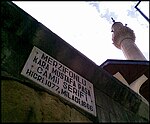Istanbul University (Turkish: İstanbul Üniversitesi) is a prominent public research university located in Istanbul, Turkey.
Founded by Mehmed II on May 30, 1453, a day after the conquest of Constantinople by the Turks, it was re-established in 1846 as the first Ottoman higher education institution based on European traditions. The successor institution, which has been operating under its current name since 1933, is the first university in modern Turkey. Some pre-1930 western sources refer to it as the University of Constantinople, after the previous name of the city, while one in French referred to it as the Université de Stamboul ("Stamboul" the name for the historic inner city).At present, there are 69,411 undergraduate, graduate, and doctoral students studying in 33 academic units, including faculties, institutes, colleges, and vocational schools at 10 campuses. The main campus is adjacent to Beyazıt Square in Fatih, the capital district of the province, on the European side of the city.
Besides being a member of the Coimbra Group, in 2019, the University took first place in Turkey according to the Academic Ranking of World Universities. Moreover, Istanbul University is ranked in the top 25 at the QS Universities In Emerging Europe And Central Asia 2021 Ranking. In 2020, the university's AACSB accredited Business School was ranked 3rd in the Middle East and 2nd in Turkey, according to Eduniversal. The Faculty of Transport and Logistics is accredited by the International Road and Transport Union. In addition, the Faculty of Natural Sciences represents Turkey in four major studies conducted by the European Organization for Nuclear Research.Istanbul University alumni include 2 Nobel laureates, Aziz Sancar (in Chemistry) and Orhan Pamuk (in Literature), the longest-serving President of Israel Yitzhak Ben-Zvi, two Prime Ministers of Israel (David Ben-Gurion and Moshe Sharett), President of Turkey Abdullah Gül, six Prime Ministers of Turkey (Suat Hayri Ürgüplü, Sadi Irmak, Nihat Erim, Refik Saydam, Naim Talu, Yıldırım Akbulut), Mayor of Istanbul Ekrem İmamoğlu.






